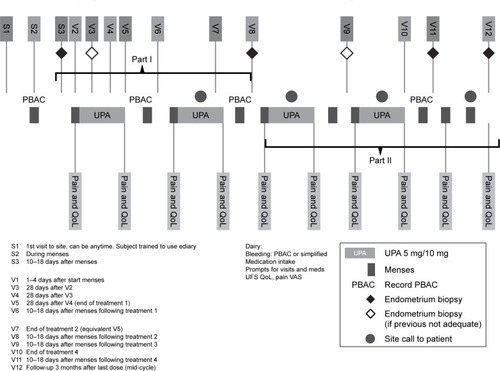Figures & data
Figure 1 Reduction in uterine volume following administration of a GnRHSA and rebound following discontinuation of treatment.
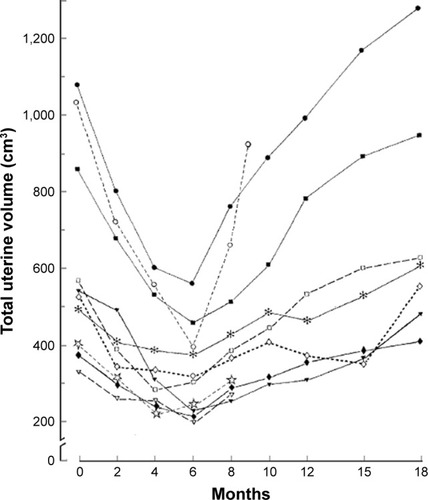
Figure 2 Hemoglobin levels during a 3-month pretreatment with a GnRHSA in three groups of patients with uterine myomas: G+I: GnRHSA plus Iron supplementation. G+P: GnRHSA+placebo. I: iron supplementation only.

Figure 3 The hypothesis proposed by Barbieri in 1990.
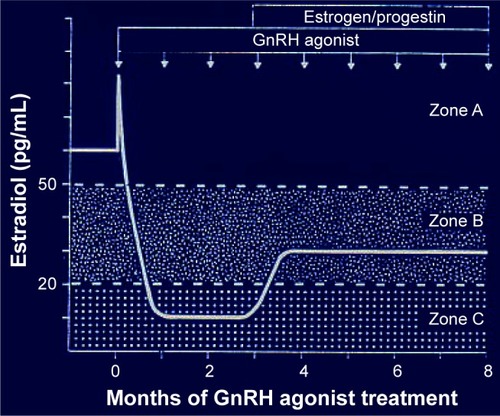
Figure 4 Effect of the administration of a GnRH antagonist on uterine size.
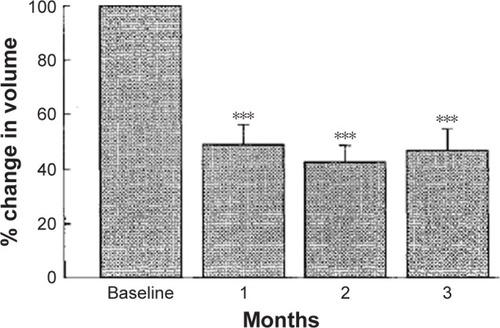
Figure 5 Mean percentage change in menstrual blood loss during the last 28 days of treatment.
Abbreviations: BID, twice daily; CEP, E2 1 mg continuously and cyclical oral P 200 mg; E, elagolix (doses in mg); E2/NETA, E2 0.5 mg and norethisterone acetate 0.1 mg continuously; LS, least squares; PBO, placebo; QD, once daily; SE, standard error.
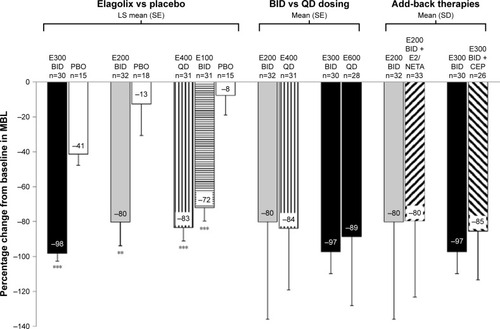
Figure 6 Administration schedule for ulipristal in the treatment of uterine myomas.
Abbreviations: PA, ulipristal acetate; PBAC, pictorial blood assessment chart.
